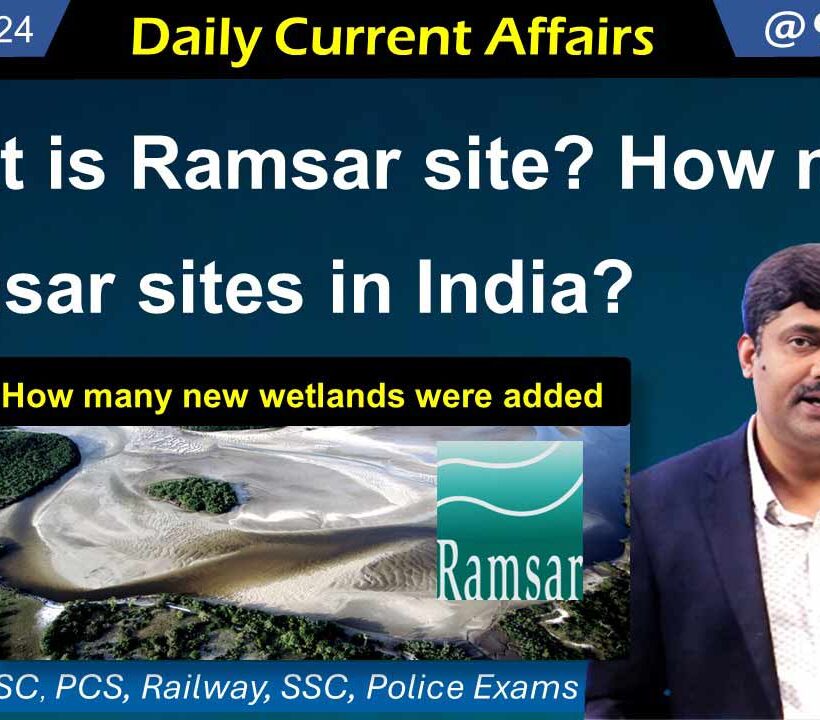This is the current affairs of 8 June 2024. Here are questions and answers of daily current affairs for better preparation of competitive exams for government jobs.
PDF Download: Click here
1. Narendra Modi: Prime Minister for the Third Consecutive Term
– What is the process of forming a government?
– When will the term of the 18th Lok Sabha begin? What is its process?
– What is the difference between the Lok Sabha and the Rajya Sabha?
– About the Central Hall, where Modi was chosen as the leader by the NDA
– Narendra Modi will take the oath of Prime Minister for the third time at Rashtrapati Bhavan on June 9th at 7:15 PM.
– Before this, Narendra Modi was chosen as the leader of the National Democratic Alliance (NDA) parliamentary party for the third consecutive time.
– This meeting took place in the Central Hall of the old Parliament.
– After this, everyone submitted letters of support to President Draupadi Murmu to form the government.
– Modi also met with the President. The President invited him to form the government.
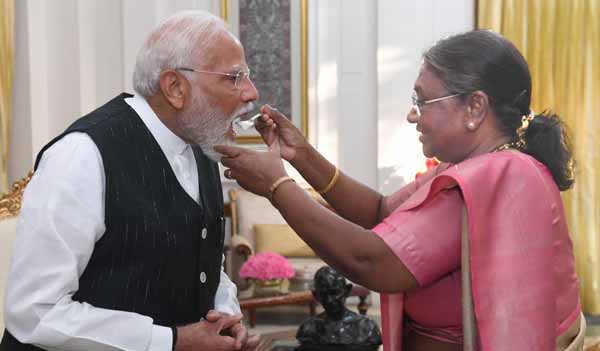
What is the process of forming a government?
– After the Lok Sabha elections, the party that gets a majority holds a meeting with its MPs to choose a leader for the position of Prime Minister.
– The chosen leader then meets the President and submits a letter informing that they have been elected as the leader.
– If a party does not get a majority, then in such a situation, political parties attempt to form a coalition themselves. If there is already a coalition, it becomes easier.
– After this, signatures are obtained on a letter from the leaders and MPs of the coalition, which is called a letter of support. It states that we support this person for the position of PM.
– The leader takes these letters of support to the President and presents his claim for forming the new government.
– Then the President invites that person to form the new government.
– The same process took place during the 18th Lok Sabha elections.
– The NDA held a meeting in the Central Hall of the old Parliament building on June 7th.
– Narendra Modi was chosen as the leader of the NDA here.
– After this, leaders of all the components of the NDA went to the Rashtrapati Bhavan. There they submitted the letter of support to the President.
– Then the President invited Narendra Modi to form the government, given his status as the leader of the largest party and the pre-election coalition.
– It was decided that the swearing-in ceremony would take place on June 9th.
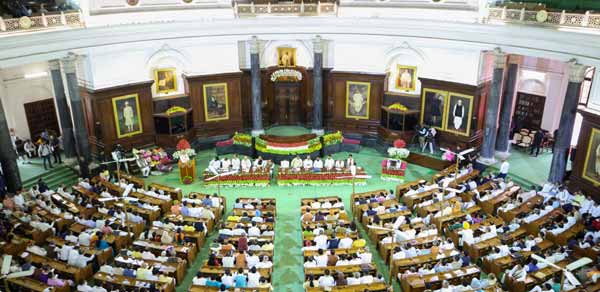
Question: When will the term of the 18th Lok Sabha begin?
– The term of the Lok Sabha is for 5 years. The process for this begins after every Lok Sabha election.
– Elections for the 18th Lok Sabha were held in 2024. The term of the 18th Lok Sabha will begin on the same day as its first session.
– It is expected that the first session of the 18th Lok Sabha will be held on June 15, 2024, following the oath-taking ceremony on June 9, 2024.
– The first day will commence with the newly elected candidates taking the oath as members.
– The next day, the President will address the joint sitting of both Lok Sabha and Rajya Sabha, formally inaugurating the session.
– The dates for the session will be decided by the new Cabinet. During the session, Prime Minister Modi will also introduce his council of ministers to both houses.
Question: When did the term of the 17th Lok Sabha end?
– The term of the Lok Sabha is for 5 years. The process for this begins after every Lok Sabha election.
– The term of the 17th Lok Sabha was supposed to end on June 16, 2024, but the President, on the recommendation of the Cabinet, dissolved it on June 5, 2024.
Differences between Lok Sabha and Rajya Sabha:
– The Parliament is composed of three parts – the President, Lok Sabha, and Rajya Sabha.
– Rajya Sabha is the upper house and Lok Sabha is the lower house.
– Members of Parliament (MPs) are elected for Lok Sabha for a term of 5 years. Members are directly elected by the people through voting. – The term of an MP ends if the Lok Sabha is dissolved. A majority in the Lok Sabha is necessary to form the government.
– Members of Parliament (MPs) are elected for Rajya Sabha for a term of 6 years. However, this house is never dissolved. Every two years, one-third of the members’ terms expire. – Members of Rajya Sabha are not directly elected by the public. The members represent the states. Their election is conducted by the members of the Legislative Assembly of the respective state.
About the Central Hall, where the NDA elected Modi as its leader
– It is located in the old Parliament House, which has been renamed as the Parliament House.
– After the establishment of the old Parliament House in 1927, the Central Hall was originally used as a library for its members.
– In 1946, when there was a need for a venue for the Constituent Assembly to discuss and debate the Constitution of independent India, the Central Hall was renovated and benches were added – renaming it as the Constitution Assembly Hall.
– The meetings of the Constituent Assembly were held at this location for about three years from 1946 to 1949.
– Its main use was for formal occasions such as the annual presidential address to members of the Lok Sabha and Rajya Sabha, and for the swearing-in ceremony of the President. It was also the venue for events like the President’s farewell ceremony and the presentation of the Outstanding Parliamentarian Awards.
– The Central Hall was used for speeches by heads of state from other countries. The last speech was delivered by the President of the Inter-Parliamentary Union (IPU), Duarte Pacheco, in March 2021, and prior to him, the then US President Barack Obama delivered a speech in November 2010.
– During parliamentary sessions, members of both Houses gathered in the Central Hall to discuss daily issues over tea and coffee.
The current status of the old Parliament House, where the Central Hall is located, is as follows:
– The rooms of the old Parliament House are not currently being used to conduct sessions. – The meetings of the Lok Sabha and Rajya Sabha are held in the new building. However, some offices of the Parliament Secretariat are still operated from the old building.
————–
2. How many new wetlands of India got the status of global Ramsar site in June 2024, taking the number to 82?
a. 2
b. 4
c. 5
d. 8
Answer: a. 2
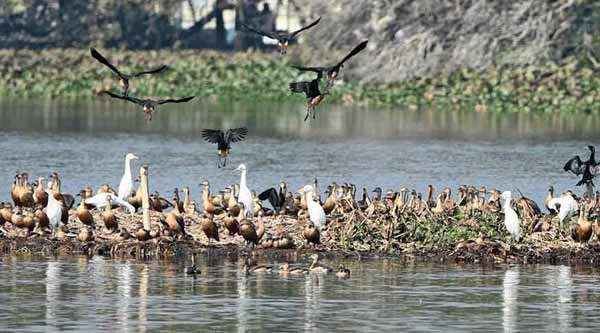
– On the occasion of World Environment Day (June 5), this announcement was made.
– With this, the number of Ramsar Sites in India has increased to 82 by June 5, 2024. Of these, 40 have been added alone in the last three years.

————–
3. Nagi Bird Sanctuary has been included in the global Ramsar site list, in which state is it located?
a. Uttar Pradesh
b. Bihar
c. Karnataka
d. Assam
Answer: b. Bihar

Nagi Bird Sanctuary
– This is located in the Jamui district of Bihar.
– The construction of the Nagi Bird Sanctuary was done after the construction of a dam on the Nagi River, which gradually led to the creation of water bodies with clean water and aquatic vegetation.
– This place was recognized at the local level as a bird sanctuary in 1984.
– Internationally, it was recognized by BirdLife International as an important bird and biodiversity area (IBA).
————–
4. Nakti Bird Sanctuary has been included in the global Ramsar site list, in which state is it located?
a. Uttar Pradesh
b. Bihar
c. Karnataka
d. Assam
Answer: b. Bihar
– Nagi Dam and Nakti Dam are so close to each other that they can be considered a single bird area.
Nakti Bird Sanctuary
– It is located in the Jamui district of Bihar.
– Nakti Bird Sanctuary was developed for irrigation in 1984 through the construction of the Nakti Dam.
– Since the construction of the dam, the wetland and its surrounding areas have provided habitat for over 150 species of birds, mammals, fish, aquatic plants, reptiles, and amphibians.
– These include the endangered Indian elephant (Elephas maximus indicus) and a vulnerable native catfish (Wallago attu).
– In 1984, it was declared a bird sanctuary, where over 20,000 birds gather during the winter months.
What is a wetland?
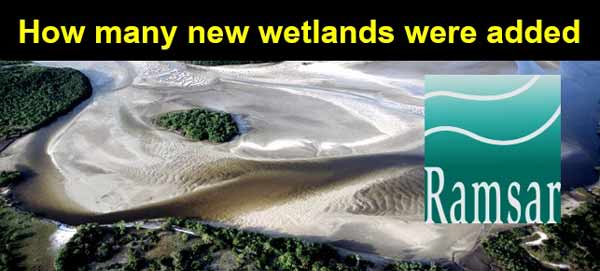
– A wetland is an area of land where water accumulates during the rainy season. This area also hosts a large number of bird species.
– In recent years, many sites have been included in the Ramsar sites, for which UNESCO provides assistance for conservation.
Why are they called Ramsar sites?
– Ramsar is a city in Iran.
– On February 2, 1971, countries around the world signed the Ramsar Convention on Wetlands here.
– Hence, it is called the Ramsar Convention. Some people also refer to this treaty as the Wetland Convention.
It came into effect in 1975.
– The official name of this treaty is the Convention on Wetlands of International Importance, especially as Waterfowl Habitat.
– It is an intergovernmental treaty that provides guidance on the conservation and sustainable use of wetlands.
– India signed this treaty in 1982.
– In India, the Ministry of Environment, Forests, and Climate Change is designated as the nodal ministry for matters related to the conservation of wetlands (wetlands).
82 Ramsar sites in India (by June 2024)
1. Asthmudi Wetland, Kerala
2. Beas Conservation Reserve, Punjab
3. Bhitarkanika Mangroves, Orissa
4. Bhoj Wetlands, MP
5. Chandertal Wetland, Himachal Pradesh
6. Chilka Lake, Orissa
7. Deepor Beel, Assam
8. East Kolkata Wetlands, West Bengal
9. Harike Lake, Punjab
10. Hokera Wetland, Jammu and Kashmir
11. Kanjli Lake, Punjab
12. Keoladeo Ghana NP, Rajasthan
13. Keshopur-Mian Community Reserve, Punjab
14. Kolleru Lake, Andhra Pradesh
15. Loktak Lake, Manipur
16. Nalsarovar Bird Sanctuary, Gujarat
17. Nandur Madmaheshwar, Maharashtra
18. Nangal Wildlife Sanctuary, Punjab
19. Nawabganj Bird Sanctuary, Uttar Pradesh
20. Parvati Agra Bird Sanctuary, Uttar Pradesh
21. Point Calimere Wildlife and Bird Sanctuary, Tamil Nadu
22. Pong Dam Lake, Himachal Pradesh
23. Renuka Wetland, Himachal Pradesh
24. Ropar Lake, Punjab
25. Rudrasagar Lake, Tripura
26. Saman Bird Sanctuary, Uttar Pradesh
27. Samaspur Bird Sanctuary, Uttar Pradesh
28. Sambhar Lake, Rajasthan
29. Sandi Bird Sanctuary, Uttar Pradesh
30. Sarsai Nawar, Uttar Pradesh
31. Sasthamkotta Lake, Kerala
32. Sundarban Wetland, West Bengal
33. Surinsar-Mansar Lakes, Jammu and Kashmir
34. Tsomoriri Lake, Jammu and Kashmir
35. Upper Ganga River, UP
36. Vembanad Coal Wetland, Kerala
37. Wular Lake, Jammu and Kashmir
38. Asan Conservation Reserve, Uttarakhand
39. Kabartal (Kanwar Lake), Bihar
40. Keetham Lake (Surasarovar), UP
41. Lonar Lake, Maharashtra
42. ‘Startasapuk Tso’ and ‘Tso Kar’ Lake, Ladakh
43. Sultanpur National Park, Haryana
44. Bhidawas Wildlife Sanctuary, Haryana
45. Thol Lake Wildlife Sanctuary, Gujarat
46. Wadhwana Wetland Area, Gujarat
47. Haiderpur Wetland, Uttar Pradesh
48. Khijadiya Bird Sanctuary, Gujarat
49. Bakhira Wildlife Sanctuary, Uttar Pradesh
50. Karikili Bird Sanctuary, Tamil Nadu
51. Pallikaranai Marsh Reserve Forest, Tamil Nadu
52. Pichavaram Mangroves, Tamil Nadu
53. Pala Wetland, Mizoram
54. Sakhya Sagar Wetland, Madhya Pradesh
55. Koothankulam Bird Sanctuary, Tamil Nadu
56. Satkosia Gorge, Odisha
57. Nanda Lake, Goa
58. ‘Gulf of Mannar Marine Biosphere Reserve’, Tamil Nadu
59. Ranganathittu Bird Sanctuary, Karnataka
60. Vembannur Wetland Complex, Tamil Nadu
61. Velode Bird Sanctuary, Tamil Nadu
62. Sirpur Wetland, Madhya Pradesh
63. Vedanthangal Bird Sanctuary, Tamil Nadu
64. Udayamarthandapuram Bird Sanctuary, Tamil Nadu
65.Tampara Lake, Odisha
66. Hirakud Reservoir, Odisha
67. Anshupa Lake, Odisha
68. Yashwant Sagar, Madhya Pradesh
69. Chitrangudi Bird Sanctuary, Tamil Nadu
70. Suchindram Theroor Wetland Complex, Tamil Nadu
71. Vaduvur Bird Sanctuary, Tamil Nadu
72. Kanjirkulam Bird Sanctuary, Tamil Nadu
73. Thane Creek, Maharashtra
74. Haigam Wetland Conservation Reserve, Jammu and Kashmir
75. Shalbug Wetland Conservation Reserve, Jammu and Kashmir
76. Ankasamudra Bird Conservation Reserve, Karnataka
77. Aghanashini Sanctuary, Karnataka
78. Magadi Kere Conservation Reserve, Karnataka
79. Karaivetti Bird Sanctuary, Tamil Nadu
80. Longwood Shola Reserve Forest, Tamil Nadu
81. Nagi Bird Sanctuary, Bihar
82. Nakti Bird Sanctuary, Bihar
Bihar
– Capital: Patna
– Chief Minister: Nitish Kumar
– Governor: Rajendra Vishwanath Arlekar
————–
5. The National Company Law Tribunal (NCLT) approved the merger of Air India and which airlines company?
a. Vistara
b. Go First
c. British
d. Indigo
Answer: a. Vistara
– The Chandigarh bench of NCLT approved the scheme involving Talace, Air India, and Vistara in a 31-page decision on June 6, 2024.
– Both Air India and Vistara are part of the Tata Group.
– After this merger, the joint operation of the two major airlines in the country will begin, although the name of the merged company has not been announced yet.
– Vistara is a joint venture between the Tata Group and Singapore Airlines.
– The merger of both airlines controlled by the Tata Group was announced in November 2022.
– In the company formed after the merger, Tata Sons Private Limited will have a 73.38% stake, while Singapore Airlines will hold 25.1%.
– The remaining 1.52% stake will be with SBICAP Trustee Limited on behalf of the Air India Employee Settlement Trust.
– In September 2023, the Competition Commission of India (CCI) also granted approval under certain conditions.
– The Directorate General of Civil Aviation (DGCA) will need to approve the transfer of Vistara’s crew, operations, and aircraft to Air India.
– Vistara CEO Vinod Kannan has stated that the airline aims to complete the merger by December 2024.
Vistara has 70 planes
– Vistara began commercial operations in January 2015 and has a fleet of 70 aircraft.
– In addition to the merger of Air India and – Vistara, the group is also in the process of merging its budget carrier Air India Express and AIX Connect (formerly AirAsia India).
– Once both mergers are completed, the Air India group will have a full-service carrier, Air India, and a low-cost airline, Air India Express.
—————
6. When is World Accreditation Day celebrated?
a. 9 June
b. 10 June
c. 11 June
d. 12 June
Answer: a. 9 June
Theme 2024
– Accreditation: Empowering Tomorrow and Shaping the Future
– This day came into existence in 2007 as a result of a joint effort between the International Laboratory Accreditation Cooperation (ILAC) and the International Accreditation Forum (IAF).
– Accreditation plays a critical role in building trust and confidence among consumers, businesses, and regulators. It does this by ensuring that products, services, and systems meet international standards.

—————
7. Who has been elected as the oldest MP of the 18th Lok Sabha?
a. Narendra Modi
b. TR Balu
c. Awadhesh Prasad
d. Rajnath Singh
Answer: b. TR Balu (82 years old)
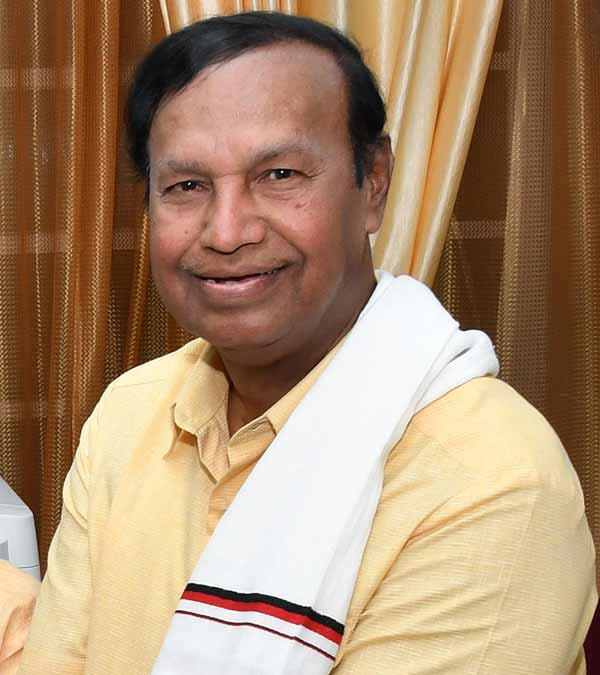
– He won the election from the Sriperumbudur (Tamil Nadu) Lok Sabha seat.
– He has been elected as a Lok Sabha MP for the 7th time.
– He became a member of the Rajya Sabha in 1986.
– TR Baalu received 7,58,611 votes in the 2024 Lok Sabha election, while AIADMK’s G. Premkumar received 2,71,582 votes.
Note:
– In 2019, Shafiqur Rahman Barq from Moradabad, UP, set the record for becoming the oldest MP.
– He became an MP at the age of 89 and was elected for the 9th time.
– He passed away in February 2024.
About TR Baalu:
– His full name is Thalikottai Raju Thevar Baalu.
– TR Baalu was born on December 13, 1941.
– TR Baalu has been involved in politics since his adolescence.
– He is a leader of the DMK party.
—————
8. Name the youngest MPs of the 18th Lok Sabha?
a. Priya Saroj, Pushpendra Saroj
b. Sanjana Jatav, Shambhavi Chaudhary
c. Aditya Yadav, Dimple Yadav
d. Both a and b
Answer: d. Both a and b (Priya Saroj, Pushpendra Saroj, Sanjana Jatav and Shambhavi Chaudhary)
– These four are young MPs elected to the 18th Lok Sabha.
– All of them are aged 25-26 years.
About Priya Saroj
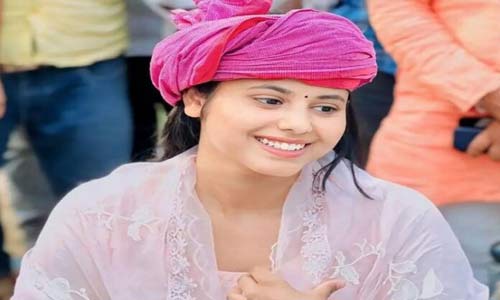
– Born in 1998, Priya Saroj is a politician and lawyer.
– She has been elected as an MP from the Machhlishahr (UP) Lok Sabha constituency.
– She is a member of the Samajwadi Party.
– She is one of the young MPs elected to the Lok Sabha, aged 25-26 years.
– She is the daughter of Tufani Saroj, who has been an MP three times from UP and is currently an MLA.
About Pushpendra Saroj

– Pushpendra Saroj is an Indian politician.
He is an MP from the Kaushambi (UP) Lok Sabha constituency.
– He is a member of the Samajwadi Party.
– He is one of the young MPs elected to the Lok Sabha, aged 25 years.
– Pushpendra is the son of Indrajeet Saroj, a five-time MLA and former minister of Uttar Pradesh.
Sanjana Jatav
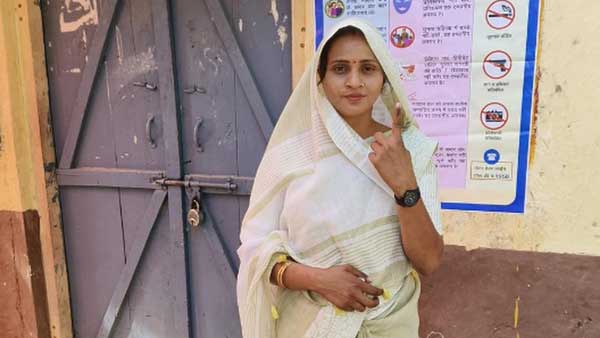
– Sanjana Jatav was born on May 1, 1998, in Bharatpur, Rajasthan.
– She is an MP from the Bharatpur (Rajasthan) Lok Sabha constituency.
– She is a member of the Congress Party.
– She is one of the young MPs elected to the Lok Sabha, aged 26 years.
Shambhavi Choudhary
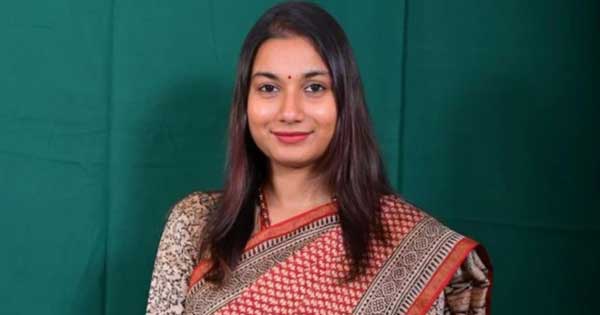
– Shambhavi Choudhary was born on June 15, 1998.
– She is an Indian politician.
– She is an MP from the Samastipur (Bihar) Lok Sabha constituency.
– She is a member of the Lok Janshakti Party (Ram Vilas) [LJPRV].
– She is one of the young MPs elected to the Lok Sabha. She will turn 26 on June 15.
– Shambhavi Choudhary is the daughter of Ashok Choudhary, a cabinet minister in the Building Construction Department in the government led by Nitish Kumar.
When were the elections held?
– The elections for the 18th Lok Sabha were held across the country in seven phases from April 19, 2024, to June 1, 2024.
– The votes were counted on June 4, 2024.
Election Commission of India
– Established: January 25, 1950
– Chief Election Commissioner: Rajiv Kumar
– Election Commissioner: Sukhbir Singh Sandhu
– Election Commissioner: Gyanesh Kumar
—————
9. When is the martyrdom day of Birsa Munda celebrated?
a. 9 June
b. 10 June
c. 11 June
d. 12 June
Answer: a. 9 June
– On June 9, 1900, Birsa Munda took his last breath in Ranchi Jail.
– In the year 2023, his 123rd birth anniversary will be observed.
– Birsa Munda is worshipped like a deity in the tribal regions of Bihar, Odisha, Jharkhand, Chhattisgarh, and West Bengal.
About Birsa Munda
– Birsa Munda was born on November 15, 1875, in Ulihatu village (Jharkhand).
– Munda is an indigenous community.
– In 1894, Birsa Munda led a movement to unite all Mundas to demand land rights from the British.
– In 1895, the British government arrested Birsa Munda on charges of working against them.
– He was sentenced to two years in prison.
– Witnessing his dedication towards the people, the inhabitants of tribal areas started addressing him as “Dharti Aba”.
– From 1897 to 1900, there were frequent skirmishes between the Mundas and British soldiers.
– Birsa and his followers posed a significant challenge to the British.
– In August 1897, Birsa and his four hundred soldiers launched an attack on the Khunti police station with bows and arrows.
– In 1898, there was a confrontation between the Mundas and the British forces near the banks of the Tangin river, where initially the British army was defeated.
– However, later, many tribal leaders of that area were arrested.
– In January 1900, another clash occurred on the Dombari hill, where many women and children were killed.
– Birsa Munda was also arrested by the British on February 3, 1900, from the Jamkopai forest.
– Birsa Munda breathed his last on June 9, 1900, while in British custody.
————–
10. Which country showered hundreds of garbage balloons on South Korea, increasing tensions between the two countries?
a. China
b. Russia
c. Belarus
d. North Korea
Answer: d. North Korea
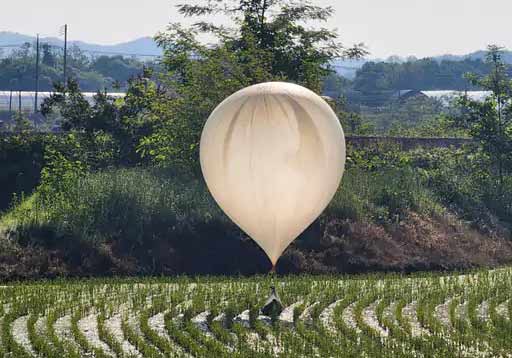
– In June 2024, the South Korean military stated that North Korea is sending hundreds of balloons filled with trash towards our country.
– Security forces are gathering them as they descend.
– According to The Hindu newspaper, these balloons are landing in the northern regions of South Korea, including the vicinity of the capital Seoul and Ganggyeong.
– According to The Hindu newspaper, North Korea has already sent over 900 balloons filled with trash towards South Korea.
– The incident of sending balloons filled with trash can also be termed as balloon warfare.
What is coming out inside the balloon?
– Inside the balloons, there are cigarette butts, scrap paper, cloth pieces, and plastic, among other debris, found in all the balloons checked so far.
– No hazardous substances have been found in these balloons yet.
– The South Korean military is tracking them through aerial surveillance and collecting the fallen debris.
– Prioritizing the safety of all citizens, the South Korean military is keeping a close watch on the balloons.
Why did North Korea do this?
– In 2020, the South Korean parliament passed a law banning North Korea from sending leaflets and spreading propaganda through loudspeakers in border areas.
– Despite this, people continued to send items there.
– North Korea sends medicines, food, radios, and recordings of South Korean news and TV shows.
– North Korea has banned news and TV shows related to this neighboring country due to this opposition.
– Due to this opposition, North Korea sent hundreds of balloons filled with trash towards South Korea.
South Korea:
– South Korea, situated in the southern part of the Korean Peninsula, shares one of the most heavily militarized borders in the world with
North Korea.
– Capital: Seoul.
– Currency: South Korean won.
– Prime Minister: Han Duck-soo.
– President: Yoon Suk-yeol.
North Korea:
– North Korea, officially the Democratic People’s Republic of Korea, is a country in East Asia.
– Leader: Kim Jong-un.
– Capital: Pyongyang.
– Currency: North Korean won.
PDF Download: Click here

